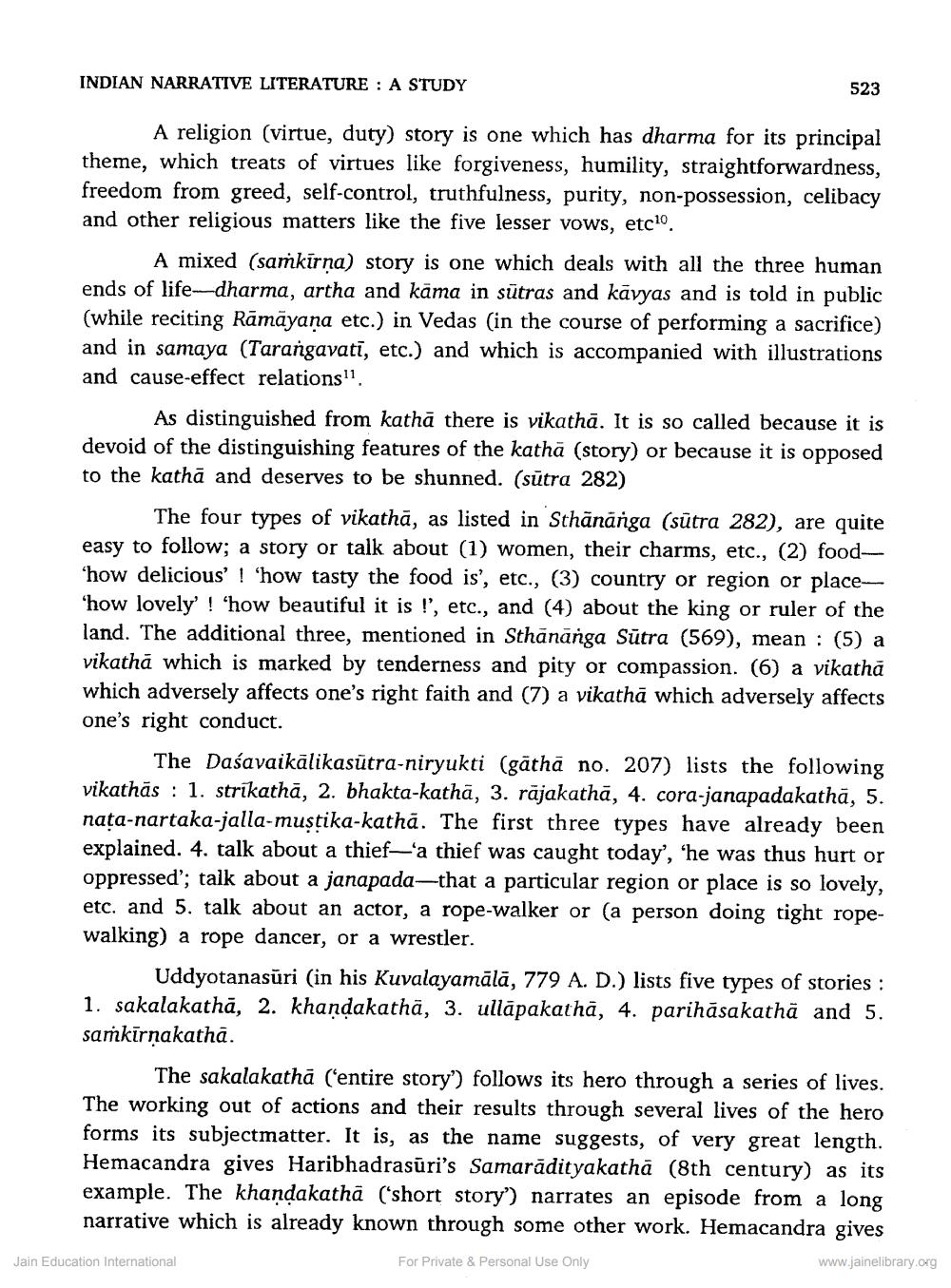________________ INDIAN NARRATIVE LITERATURE : A STUDY 523 A religion (virtue, duty) story is one which has dharma for its principal theme, which treats of virtues like forgiveness, humility, straightforwardness, freedom from greed, self-control, truthfulness, purity, non-possession, celibacy and other religious matters like the five lesser vows, etc10. A mixed (samkirna) story is one which deals with all the three human ends of life--dharma, artha and kama in sutras and kavyas and is told in public (while reciting Ramayana etc.) in Vedas (in the course of performing a sacrifice) and in samaya (Tarangavati, etc.) and which is accompanied with illustrations and cause-effect relations! As distinguished from katha there is vikatha. It is so called because it is devoid of the distinguishing features of the katha (story) or because it is opposed to the katha and deserves to be shunned. (sutra 282) The four types of vikatha, as listed in Sthanarga (sutra 282), are quite easy to follow; a story or talk about (1) women, their charms, etc., (2) foodhow delicious' ! 'how tasty the food is', etc., (3) country or region or place 'how lovely' ! 'how beautiful it is !', etc., and (4) about the king or ruler of the land. The additional three, mentioned in Sthananga Sutra (569), mean : (5) a vikatha which is marked by tenderness and pity or compassion. (6) a vikatha which adversely affects one's right faith and (7) a vikatha which adversely affects one's right conduct. The Dasavaikalikasutra-niryukti (gatha no. 207) lists the following vikathas : 1. strikatha, 2. bhakta-katha, 3. rajakatha, 4. cora-janapadakatha, 5. nata-nartaka-jalla-mustika-katha. The first three types have already been explained. 4. talk about a thief-'a thief was caught today', 'he was thus hurt or oppressed'; talk about a janapada-that a particular region or place is so lovely, etc. and 5. talk about an actor, a rope-walker or (a person doing tight ropewalking) a rope dancer, or a wrestler. Uddyotanasuri (in his Kuvalayamala, 779 A. D.) lists five types of stories : 1. sakalakatha, 2. khandakatha, 3. ullapakatha, 4. parihasakatha and 5. samkirnakatha. The sakalakatha ('entire story) follows its hero through a series of lives. The working out of actions and their results through several lives of the hero forms its subjectmatter. It is, as the name suggests, of very great length. Hemacandra gives Haribhadrasuri's Samaradityakatha (8th century) as its example. The khandakatha ("short story) narrates an episode from a long narrative which is already known through some other work. Hemacandra gives Jain Education International For Private & Personal Use Only www.jainelibrary.org




